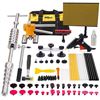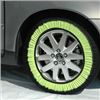The MoT Files: Why the test is so important

The Ministry of Transport test, or MoT test, as it's better known as, has been with us since 1960. The reason it was created was simple - during the 1950s, road use boomed in the UK and the number of cars jumped from five to 15-million in less than 10 years.
With so many cars on the road, many of which were pre-WWII motors bought cheap, and run on a shoestring, safety standards were pretty poor. In fact, they were shocking. Road deaths were climbing alarmingly, and the government needed to do something quickly. The end result was a new MoT test, which was originally designed to run for all cars more than two years old, on annual basis, with the first test taking place on the car's 10th birthday, and every year after that.
Originally, the MoT test wasn't that complex, being more of a basic roadworthiness check, rather than something deeper and more detailed. Under review were the car's brakes, lights and steering - but as the years passed, the MoT was toughened up and, very quickly, the corresponding safety standard on UK roads was improved. In April 1967, the 10 year stipulation was brought down to a far more sensible three, while the items tested became more numerous over the years.
In 1968 tyres were included in the test (minimum tread depth was 1mm back then), and in 1977 windscreen wipers and washers, direction indicators, brakelights, horns, exhaust system and condition of the body structure and chassis were all added to the test. In 1991 emissions tests for petrol engines, together with checks on the ABS, rear wheel bearings, and rear seat belts were added. The dreaded diesel emissions test was added in 1994 (along with a spate of cambelt failures as the test was so brutal).
In modern times, the test continued to evolve as cars became more complex. So, in 2012, tougher ABS checks were added, as were inspections of secondary restraint systems, battery and wiring, stability control systems, speedometers and steering locks. The system is now fully computerised and online - so the stamped certificate is less important than it used to be, as MoT status can be checked instantly via a connected computer.
There's no question that roads are safer as a result of their introduction and, as well as that, air quality benefits from the annual appraisal of all eligible cars' emissions systems has also made a huge impact. You'd not want to drive a poorly maintained car that hadn't at least had a check done on its brakes or steering once a year, while your town or city has undoubtedly benefitted from the cleaner air legislation.
The MoT test is big business too. There are around 20,100 garages registered to test in the UK and they employ around 53,000 testers. Their ability to test is constantly monitored by the VOSA, which in principle means that it's not down to any Tom, Dick or Harry to safety check your car. But bear in mind one final thought - don't rely on the MoT test to catch everything. it's testing the minimum standard of safety, and cannot and should not ever be considered a replacement for regular and thorough servicing.
Comments
Author
 Keith Adams
Keith Adams
Latest
 Best jump starter packs for homes and garages
Best jump starter packs for homes and garages
 Top 10 Best Welders For Beginners And Home Use
Top 10 Best Welders For Beginners And Home Use
 Top 10: Screwdriver Sets for Garages & Workshop Use
Top 10: Screwdriver Sets for Garages & Workshop Use
 Top 10 Best Socket Sets
Top 10 Best Socket Sets
 Top 10 Best Dent Pullers
Top 10 Best Dent Pullers
 Top 10 Oil Drip Trays
Top 10 Oil Drip Trays
 Top 10: Best Snow Socks 2019
Top 10: Best Snow Socks 2019











Add a comment